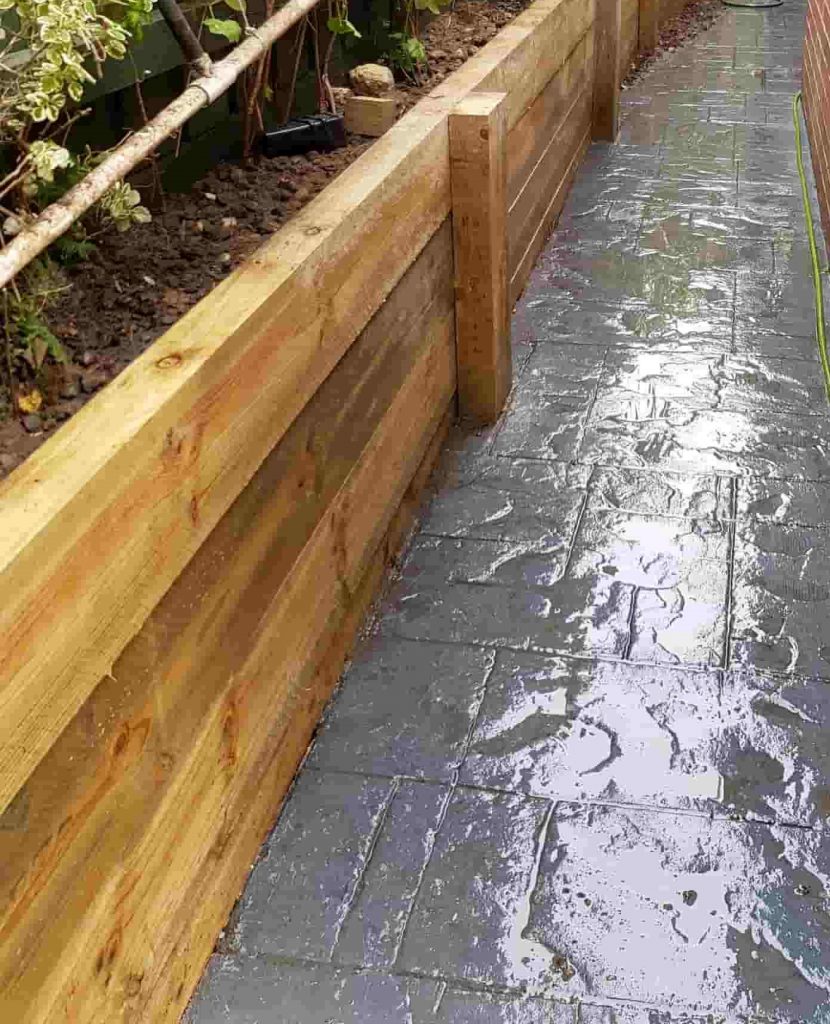Introduction
In the lively and often unforeseeable climate of Melbourne, many property owners discover themselves facing the challenges of irregular terrain and soil erosion. This is where maintaining walls come into play. Not just do they serve a practical purpose by avoiding soil disintegration, but they likewise boost the aesthetic appeal of your residential or commercial property. However how does one tackle setting up a retaining wall? In this comprehensive guide, we will look into The Step-by-Step Process of Successful Retaining Wall Installation in Melbourne, exploring everything from preliminary preparation to final touches.
Understanding Maintaining Walls
What Are Keeping Walls?
Retaining walls are structures created to hold back soil and rock from unnatural slopes. They can be made from various products such as timber, concrete, brick, or stone. The main function is to avoid soil erosion and to develop flat areas for landscaping or building.
Why Do You Need a Maintaining Wall?
There are numerous reasons someone may think about installing a retaining wall:
- Prevent Soil Erosion Create Functional Land Space Improve Visual Appeal Increase Home Value
Types of Maintaining Walls
When it comes to selecting a retaining wall type, you'll generally experience:
Timber Sleeper Retaining Wall Concrete Sleeper Retaining Wall Brick Maintaining Wall Stone Keeping WallEach has its distinct advantages and viability based upon your particular needs.
The Step-by-Step Process of Effective Retaining Wall Setup in Melbourne
Step 1: Initial Planning and Design
Before you even think of getting a shovel, you require to prepare.
Assessing Your Site
Begin by assessing your website's topography and drainage patterns. Keep an eye out for possible concerns that could affect your setup procedure later on.
Design Considerations
Consider factors like height, products, and purpose. Will it be purely practical or do you want it to enhance your landscape?
Step 2: Employing an Expert Contractor
Choosing the Right Retaining Wall Professional Melbourne
Hiring a knowledgeable retaining wall contractor can conserve you time and frustration. You'll want someone who knows local guidelines, comprehends soil key ins Melbourne, and has experience with different materials.
Questions to Ask Your Contractor
- What is your experience with retaining wall installation? Can you offer referrals or examples of previous work? What service warranties do you offer?
Step 3: Getting Necessary Permits
Before starting any construction work in Melbourne, check if you require a license. Local guidelines can differ substantially based on where you live.
Materials for Your New Retaining Wall
Timber Sleeper Retaining Walls
Timber walls are aesthetically attractive but might need more maintenance with time due to rot or insect damage.
Benefits:
- Cost-effective Easy to install
Concrete Sleeper Retaining Walls
These walls provide resilience and low upkeep requirements.
Benefits:
- Long lifespan Resistant to rot
Brick Maintaining Walls
Bricks provide a classic appearance that complements various landscaping styles.

Benefits:
- Aesthetically pleasing Strong structure
Stone Retaining Walls
Natural stone offers unmatched appeal but can be labor-intensive during installation.
Benefits:
- Unique appearance Highly durable
The Setup Process Discussed in Detail
Step 4: Preparing the Website for Installation
Once you have actually chosen the right products and secured authorizations, it's time to prepare the site.
Clearing the Area
Remove any plants or debris from the area where the wall will be built.
Digging Trenches
You will need to dig trenches deep enough to accommodate your picked products while guaranteeing appropriate drainage behind the wall.
Step 5: Building Your Foundation
A solid structure is important for any retaining wall's longevity.
Installing Gravel Base
Lay down gravel at the bottom of your trench for drain functions-- this action helps reduce hydrostatic pressure behind the wall.
Constructing Your Retaining Wall Structure
Step 6: Laying First Course of Blocks or Timbers
Start laying your very first course level with cautious attention paid to alignment and levelness utilizing a string line or laser level.
Step 7: Including Extra Courses
Continue including courses according to your style plan while ensuring that each course is staggered for strength.
Finishing Discusses Your New Wall
Step 8: Backfilling Behind the Wall
Once installed, backfill with gravel or soil while taking care not to disturb your newly positioned blocks or timbers.
FAQs about Keeping Walls
li20/ol2/li21li21/ol3li22# How long does it require to install a maintaining wall?- Typically, setup can take in between one day to 2 weeks depending upon size and complexity.
- Generally under one meter; speak with regional laws for specifics.
- Yes! Proper drain prevents water accumulation which might lead to failure over time.
Conclusion
Installing a retaining wall is no small accomplishment-- it needs careful preparation, execution, and knowledge. By comprehending each step laid out in this guide about The Step-by-Step Process of Successful Retaining Wall Installation in Melbourne, you'll be fully equipped to tackle this project whether you're thinking about employing a retaining wall contractor or starting a DIY experience. In either case, investing time upfront will pay off by producing a long-lasting structure that boosts both performance and aesthetic appeals on your property!